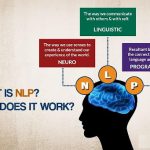The word fishing generally refers to the act of trying to catch fish. It involves various techniques which range from being traditional to modern techniques. In our modern world, fishing could be termed as one of the biggest industrial sectors besides agriculture. This sector has drawn the attention of many private and government investors as well. It tends to provide a balance in the economy of any developing nation. Now as we dig deep into this content, various ways and methods will slowly unveil and its aspects related to this industry as well.
Table of Contents
History of fishing
Now as we have dipped into this content we should have a basic primary knowledge about this activity. It plays a pivotal role in developing economies. This is an ancient practice that dates back approximately about 40,000 years ago. The rise of this activity eventually began from the continent of Africa. Neanderthals practiced this even way before this era that ranged back to 2, 00,000B.C. People in those eras evolved with hand weave baskets to net their catch and some early forms of netting were also discovered.
- Trawling – Trawl vessels came into existence with from the medieval era and probably from this time fishing became a commercial industry. The British Dogger was an early type of a sailing trawler from the 17th century but the modern trawlers came in between the mid-19th century.
- Recreational Fishing – The early evolution of this activity is although unclear but this leapt the English Civil War. This was also documented in many books and novels which aroused the interest of common folks into this activity.
The role of fishing cooperatives on social–Economic
Techniques of fishing
As mankind developed, many fishing tactics and techniques have also developed. Although this term only includes fishes but other aquatic life forms such as mollusks, crustaceans and edible marine invertebrates are a part of it. Some of the techniques include:
- Hand Gathering: This method of fishing probably dates way back but is still in use in many parts of the world. This method preferably comes into effect during the dry seasons when the level of the water in the water bodies tends to fall. As a result, fishes get trapped in somewhat low oxygenated pools and puddles. Thus it becomes easier to capture these fresh stocks using hand only.
- Netting: This method involves the use of either woven or machine crafted nets that are used nowadays. Unlike the previous method, this method is applicable irrespective of any season and can be used irrespective of freshwater or saltwater bodies. Generally, this brings in commercial fishing practices.
- Angling: This method often takes in the form of a hobby or recreation. Often professional anglers associate themselves with this hobby and tend to benefit from this. This method involves the use of ‘’fishing rods’’ or ‘’fishing poles’’. This equipment has both traditional and modern looks as well but serves the single purpose of catching fish.
- Use of Spears & Harpoons: This method is generally applied to saltwater bodies where anglers shoot live fish and other crustaceans. This is often considered as a means of sport or commercial selling purpose.
Fishing industry
This industry is broadly classified into activities concerned with taking, culturing, processing, preserving, storing, transporting and marketing of fish products. So from here, one can easily visualize how it is the second most flourishing industry after agriculture. Under this there are three principal sectors:
- The commercial sector – comprising of enterprises and individuals associated with a wild-catch or aquaculture resource.
- The traditional sector – associated with the aboriginal people who derive products according to their tradition.
- The recreational sector – Associated with the purpose of recreation, sport or sustenance with fisheries resources and derived products are not for sale.
Excluding all this, the fishing industry also includes vast networks of commercial fishing, fish farming and direct sale of fish products.
Fisheries management
This sector not only promotes marketing and job creation purpose but also lends a hand in the field of education, science, and technology as well. Modern fisheries management is always referred to as a governmental system of management. Their rules are based on some defined objectives of fisheries science. Fisheries Science is the academic discipline of managing and understanding fisheries management field. It is a multidisciplinary science that draws in:
- Oceanography
- Marine conservation
- Marine biology
- Population dynamics
- Bio-economics.
These fields in our modern times are drawing in many students across the world. It is a vast platform for practicing conservational programs as well. Populations of aquatic and marine life that are on the verge of extinction could reap the benefit of this newly acquired field.
Sustainability and animal welfare concerns
Here is a list of some of the negative impacts that are mainly human-generated. This mainly involves:
- Overfishing
- By-catch
- Marine pollution
- Environmental effects
- Fish farming
All of these above-mentioned activities have played their part in causing an imbalance in the stable aquatic ecosystem. This had led to the decline of some popular species of aquatic life. These species demands immediate and concrete actions to be taken for their existence. If they are not taken care of now, then the species which are facing the threat of extinction will be extinct. Humans have played their role as a greedy species that tried to be superior and led to a series of destructive event for the environment. There are possible conflicts between fisherman and fishery scientists and these disputes must be settled.
Fishing has served as an activity which served both our survival as well as economical needs. A lot of human population is heavily dependent on agriculture and fishing as their primary source of earning. In our modern century, there has been a vast growth in this sector. Moreover, technological advancements have also led to a rise in the economy of this sector. This, in turn, has affected the natural course of our ecosystem and we are unable to mend the damages we caused.







